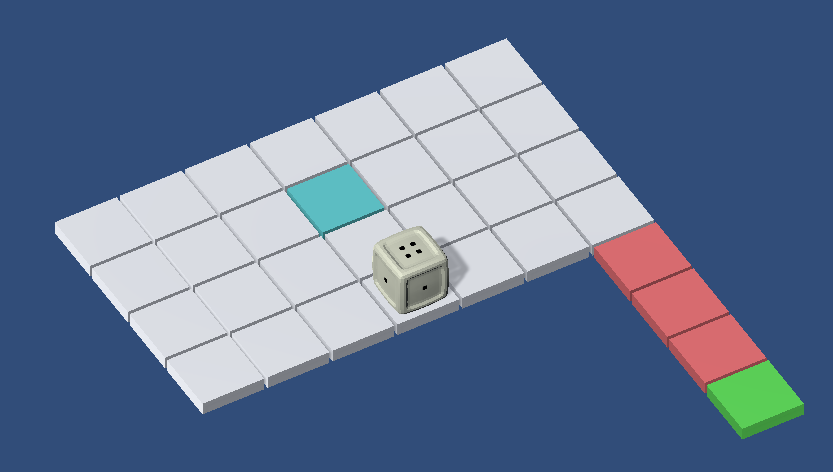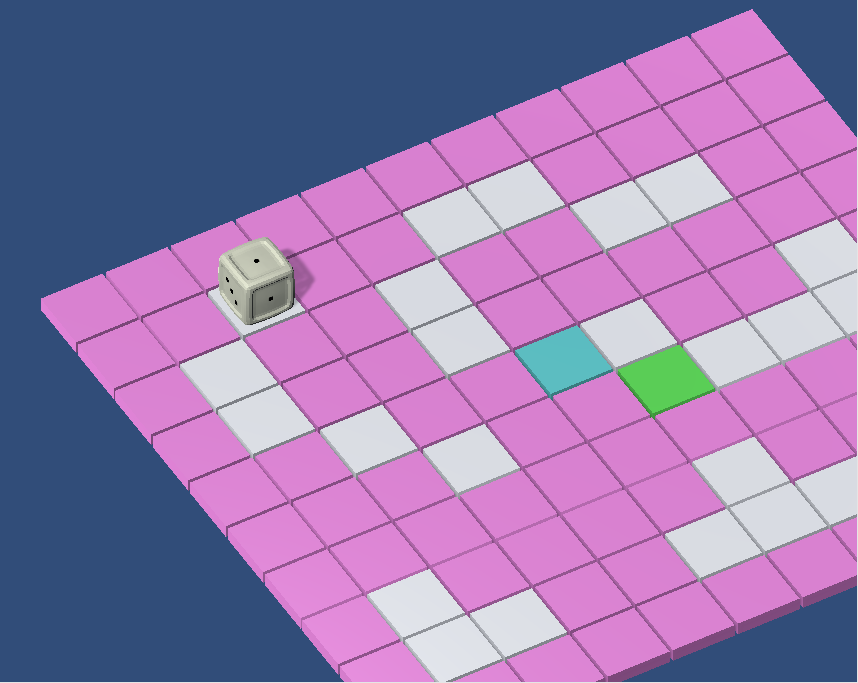As I have now seen some games that are comparable (but still not that many, I tried mostly non-puzzle games, ironically!), it will be interesting to make comparisons. :) Even though I wish each game could be judged independently, but when the concept is really close, it is useful to build on previous reviews and concentrate on the differences.
Various thoughts:
- A first remark: the core mechanic is akin to that from Marimbla, so several people had the same idea; I do not know if other games picked the exact same, I still have to see. Nevertheless, yours has different sub-mechanics, such as the value-changing tiles or the falling tiles, while Marimbla had the walls (on which you could collide to stop) as the main secondary mechanic (if ‘main secondary’ makes any sense :p).
Interestingly, your value-changing tile concept resembles my stamp concept. Nevertheless, in your numbered/numerical context, a nice addition (! XD) is that you can either assign a value (with red dots) or increment a value (with black dots). You can also glide over such tiles and have to stop right on them to activate their effect.
(It is fascinating to see how various people could arrive at such close concepts, yet still keep a difference. :)) - I like the falling animation with a cartoony sound. XD (I was thinking of doing either a similar thing or a straight funny vertical rock-like rapid fall, but ended up skipping that because single me got short on the time side.) Overall, the sound effects are great. Just like Edalbung, I think I would have preferred a bit of music as an addition, but this is a detail.
- I notice you used a non-standard numbered die! Which I find more interesting; nevertheless, this means that the user cannot use the simple ‘seven’s complement’ rule (ie the sum of any pair of opposite sides is 7) to know what the current global state of the die is. I think some way of telling the player would help. (For the record, I had the very same issue and decided on showing the configuration through a UI element.)
- I notice the perspective angle is not 45°, but slightly different; it looks like this choice was made accordingly to the keys, so that left-down-right-up keys are closer to the orientations of the die. Cunning, smart choice! :)
- As an element of comparison: Marimbla had the sweet idea of showing in advance where the die would be located depending on your possible choices. This could both be a helper or make the game too easy to your taste, so I am unsure if it would have been better here, but you may want to consider.
- I like that you made an implicit tutorial (as you state in your answer to JD3006). I think that works pretty well; also, the different colours for the tiles help cement the tiles’ behaviours in the player’s mind.
- I wish I had a zoom-out / camera functionality in some levels, such as in level 14’s ‘crossroads’, so that I could see the whole level and anticipate better. This was nothing serious here, though.
- Seeing the nice cube’s movement and sounds, and how some levels have a rather extended solving pathway, I am thinking a ‘run solution’ functionality (which would show the player a solution) would be nice; I have seen one implemented in Sokoban by Koce.
- Haha, that ‘floppy disk duck’ sound for forbidden movements! XD (Guess what? I wanted to put one too.)
- I like how the ‘movement restricting’ sides’ rotation has to be taken into account. (Actually, I wanted to do the same for my arrows, but ended up giving up on the idea for lack of time…)
- A small note on the interface: you used a simple, plain, functional one. This is totally fine to concentrate on the main game, but I find it ironic that this would be the choice for the larger team. ;)
- I see on the game page that you estimated the playing time at ‘[a] few seconds’; that may be true for the simpler levels, but I would advise switching to several minutes, considering the later ones. XD
- Up to now, your puzzle game is the one with the most levels I have seen, but I think this is somewhat of a quantitative detail — and you were four level designers, while all the others I saw only had only one, so it should be put into perspective (! Pun not intended XD).
But qualitatively, it also has a high standard, and once again, the fact that you had four level designers surely explains it. - Oh, by the way, I like your punny title. :)
- Oh, one last thing (I usually talk about this point firstly!): you apparently made the WASD controls layout-independent, as my AZERTY layout shows. :) Few games I tested do.
I thought your game had near the right balance between workable and ‘thought-provoking’. This may depend on people. For instance, I really solved several levels through level-headed analysis; some other bits I (shamefully) partially brute-forced (which precise route you should take in the lower-right yellow area in level 14, for example; to be honest, it was probably solvable thinking of the die’s orientation).
All in all, I think your game shines in the difficulty progression and level design categories (mindDie is another worthy contender for this last aspect).
Anyway, in itself, the game is great. :) Thank you!
 Checkmate!… Against myself.
Checkmate!… Against myself.

